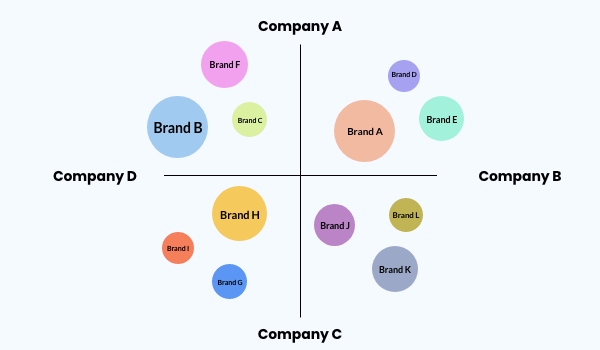
Nov 30 2022
9 min read


Nov
Prioritizing your internal brand can take you a long way. Along with lowering attrition rates, it motivates employees to do their best. Not for the pay cheque at month’s end; but because they’re inspired by what their company stands for. That kind of loyalty is priceless.
Think about it: If an employee posts a good company review, your brand’s value instantly increases. And top talent would want to associate with it. It gives you a more qualified workforce that can scale your business twice as fast. Who wouldn’t want that?
Amazon is one company that does an excellent job with its internal branding strategy. On average, its L&D team spends over $1.2 billion on upskilling courses for over 300,000 U.S. employees. It encourages employees to promote company culture on their socials. As you see here:

A host of other benefits are associated with building the right internal brand strategy. And to save you time, we’ll quickly run you through how to create one of your own. But first…
There are two types of branding—internal and external; the first targets your employees, while the latter is directed toward your external stakeholders (for example, your customers). A good internal branding strategy can inspire your employees to go the extra mile while working on a project.
The aim is to make them feel like they’re working towards a meaningful goal. A higher purpose that could change the world as they know it. For example, look at how Apple fostered an unequivocal sense of belonging in their employees.
The brand’s tagline, “Think Different,” was seamlessly adopted into its internal branding strategy. And all their employees were taught to live by the two words. At work, they were constantly reminded to break the mold. Do things differently. Innovate. Because that’s what Apple is about.
Pro tip: If you want to create a memorable internal or external brand, one book you should read right away is Start With Why: How Great Leaders Inspire Everyone to Take Action by Simon Sinek. It's got everything you need to create a thriving organizational culture.
Now that you understand the importance of internal branding, you’re left wondering how to create a strategy. In this blog, I will take you through the steps you’ll need to follow and give you some tips. Let’s get started.
Employees are human touchpoints. They interact with customers, and their actions affect your brand image. An odd remark could easily lead to a scathing Twitter review. That’s where your firm’s internal marketing can create an impact.
Doubling down on your company’s mission, vision, and value statements helps you understand the purpose of your organization. This gives you a framework to work with while developing your internal brand strategy.
Mission:
Think about how your company helps its stakeholders on a day-to-day basis. In other words, what’s the reason for its existence? Your mission statement can motivate employees by allowing them to understand what the organization does. While creating your mission statement, ask yourself questions like:
What do we do?
Who do we help?
What do we want to achieve?
What impact do we want to create?
For example, a social media app would focus on communication as its purpose. Twitter stays true to this, with its mission statement: “To give everyone the power to create and share ideas and information, instantly, without barriers.”
Vision:
Now that you’ve covered what the company does, it’s time to look at things from a long-term perspective. Where do you see the organization headed years from now? What is your brand’s larger goal? While mission statements convey what your company does, vision statements refer to what your company will do in the future.
It is essential to use a moonshot goal here. Getting caught up in the practicality of matters won’t let you dream big enough. Start by mapping out your business goals and conducting competitor research. Once you’ve noted the relevant information, you can brainstorm meaningful statements that resonate with your stakeholders.
Company values:
These refer to the principles your company stands for. They represent your culture and approach to any situation. Laying down company values ensures that all employees are working in tandem towards a common goal. It also attracts talent that believes in what your company stands for.

While brainstorming ideas for these three statements, create a mindmap with key terms you’d like to include and how they’re relevant. Make it a point to get feedback from stakeholders to understand what works and what doesn’t. Once done, you’re ready to move on to the next step.
With a deeper understanding of your competitors, you’ll be able to gauge what kind of messaging resonates with employees. While you could use many market analysis frameworks, the two options apt for this exercise are perceptual mapping and SWOT analysis.
While conducting perceptual mapping, you will have to visualize the perception of your company and its competitors on a plot graph. Choose any two factors you want to focus on. Say, employee attrition and workforce quality. Draw a graph with these two factors on the axes and plot where you and your competitors will fall.

This will give you a bird’s eye view of how your company is perceived compared to others. With this knowledge, you’ll understand which competitors are doing better than you and why.
The next framework you should move on to is SWOT analysis—strengths, weaknesses, opportunities, and threats. Here’s a breakdown of what each alphabet stands for.
Strengths: What is the organization good at, and what makes it stand out from competitors
Weaknesses: Areas that need to be improved upon to remain competitive
Opportunities: External factors that provide an advantage, like a well-established employer brand
Threats: Factors that could harm the organization
Conducting research into the market gives you enough information to make the right decisions while crafting an internal brand strategy.


An effective employee engagement plan is the difference between teams that go above and beyond at work and those that work to get paid.
Conduct focus groups, Q&A sessions, and surveys to understand their challenges and desires. This will give them a sense of ownership and encourage them to be more receptive to new concepts you may implement.
Create a team solely in charge of internal branding and change communication. You can also appoint “internal brand ambassadors” who create awareness about your work culture and employee benefits. This helps build credibility and trust because of the human element involved.
You may like to read: Astonishing employee engagement data you must know
Chances are your company already has a well-defined external brand identity—including your logo, brand colors, tagline, and tone of voice. These elements promote top-of-mind recall and ensure consistency in all your communication.
While creating an internal branding strategy, you need to be mindful of whether it ties into your external strategy. This connectivity will help employees understand how the two are related to each other. It also helps them relate to your external advertising.
That said, it’s always a good idea to mix things up a little when it comes to internal branding. You can assign catchy names to each department or tweak your logo to make it more employee-centric for internal communication. As long as the messaging is consistent, this is a great way to create a new branding strategy that employees will love.

Gamification in the workplace is one of the most effective ways to recognize your employees and keep them excited about their work. After the initial launch, you’ll need to keep the energy alive by constantly reinforcing your internal branding.
Create a leaderboard where you give points to employees based on their performance. A great way to do this is by using digital signage in your office that dynamically shifts users when employees hit their targets. It creates a healthy sense of competition, improving overall business productivity.
You can explore Pickcel’s digital signage platform, which will help you run all corporate communication messages and productivity-boosting information on screens. You can also request integrations & custom app development to suit specific business needs.
Once you’ve created your strategy, the next move is to communicate it with your employees. A one-off internal memo or a brief appearance on your onboarding deck won’t do the trick. You’ll need to develop a launch plan to effectively communicate the change.
Use a multi-pronged approach where you introduce the new messaging and then explain the meaning behind it. Keep reinforcing this by including the internal branding in every internal touchpoint you have—from office party decorations to L&D workshops. Follow a staggered communication plan so each new facet of the strategy is conveyed in detail.
You can also create an internal brand tagline and add it to your company portal. Make sure it’s short and snappy to make it more memorable. The overarching goal of the exercise is to motivate your employees and help them resonate with your employer brand.
An effective internal branding strategy can help your employees connect with your brand, inspiring them to think out of the box and work with more zeal. But creating a plan doesn’t cut it—you must constantly communicate it through every internal touchpoint, just like how you do with your external brand.
Optimizing your internal branding will allow you to familiarize employees with your products and services in an engaging manner. There are many ways to do this, from posters on the notice board to digital signage around the office. If you’re looking to amp up your internal branding, we can help you. Reach out to learn more.
Read more blogs:
Take complete control of what you show on your digital signage & how you show it.
Start Free Trial Schedule My Demo
Nov 30 2022
9 min read

Oct 20 2022
5 min read

Sep 20 2022
12 min read

Sep 2 2022
8 min read